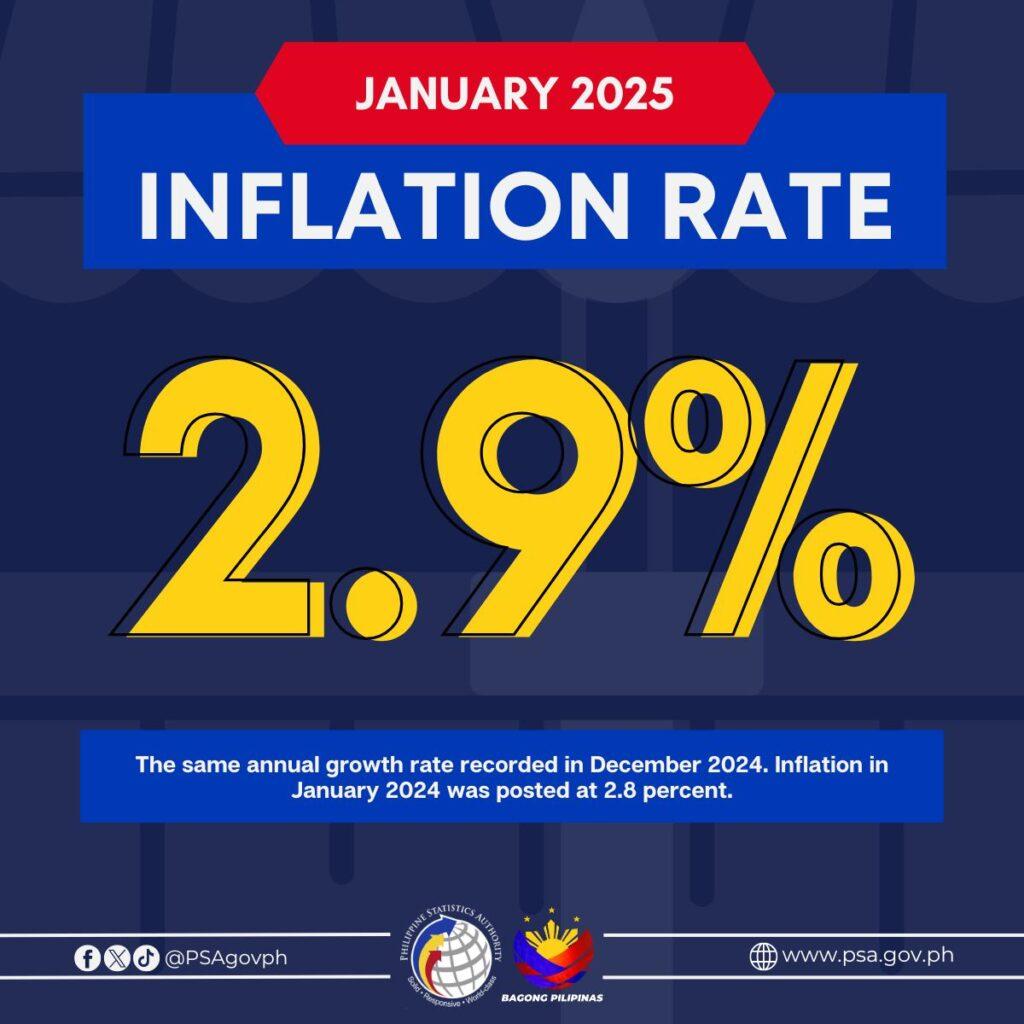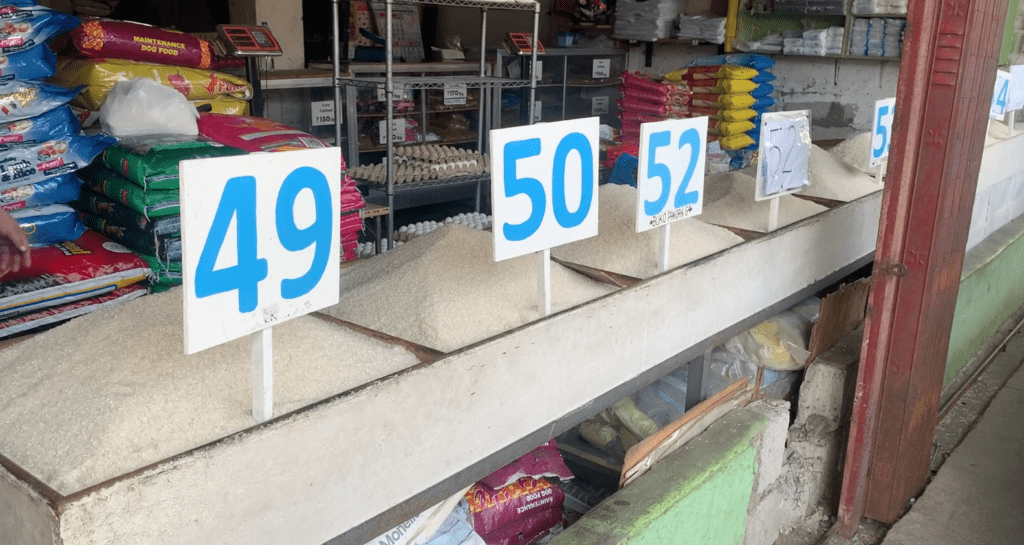PH inflation rate remains at 2.9% in January
The country’s inflation rate remained stable at 2.9% in January 2025, matching the rate from December 2024, according to a statement by Philippine Statistics Authority (PSA) Undersecretary Dennis Mapa. However, this is higher compared to the same month last year.

In a press conference aired on the PSA Facebook page today, February 5, Undersecretary Mapa announced that there has been no change in the inflation rate experienced by the Filipinos, one month after the start of the new year.

It was reported that the main contributor behind this inflation was the Food and Non-alcoholic Beverages sector with 3.8% inflation rate, accounting for 50.3% of the total inflation. Significant contributors to this increase included Vegetables, particularly tomatoes, with 21.1%; Meat and Other parts of slaughtered animals with 6.4%; and Fish and Other seafood with a 3.3% inflation rate.
Other sectors also made notable contributions, such as Housing, water, electricity, gas and other fuels (2.2% inflation) and the Restaurants and Accommodation Services (3.2%).
Among the 13 commodity groups, three of these recorded the fastest increases this January compared to December 2024, namely Food and Alcoholic Beverages with 3.8%; Alcoholic Beverages and Tobacco with 3.5%; and Transport with 1.1% inflation.
In contrast, seven commodities recorded the slowest increase, namely Clothing and Footwear with 2.3%; Housing, water, electricity, gas and other fuels with with 2.2%; Furnishing, Household Equipment and Routine Household Maintenance with 2.6%; Recreation, Sports, and Culture with 2.4%; Education Services with 4.2%; Restaurants and Accommodation Services with 3.2%; and Personal Care, and Miscellaneous Goods and Services with 2.8% inflation.
Moreover, two commodity groups remained at their constant prices since December 2024: Health with 2.5% inflation and Information and Communication with 0.2% inflation. There was no recorded increase in the Financial Services commodity.
Meanwhile, according to Undersecretary Mapa, rice saw a price drop last month with -2.3% inflation since its price increase in December 2024, which is lower than the previous -2.8% in June 2020.

He also added that the ongoing increase in the inflation rate, especially regarding food, is still due to the disasters from last year—particularly the typhoons that hit the country.
“Ang threat talaga natin ngayon ay doon sa food inflation, in particular to meat and vegetables. Doon talaga may nakitang pagtaas despite the reduction in the price of rice,” Mapa said.
(“Our threat now is food inflation, in particular to meat and vegetables. Despite the reduction in rice prices, this is where we have seen a significant increase,” Mapa said.)

